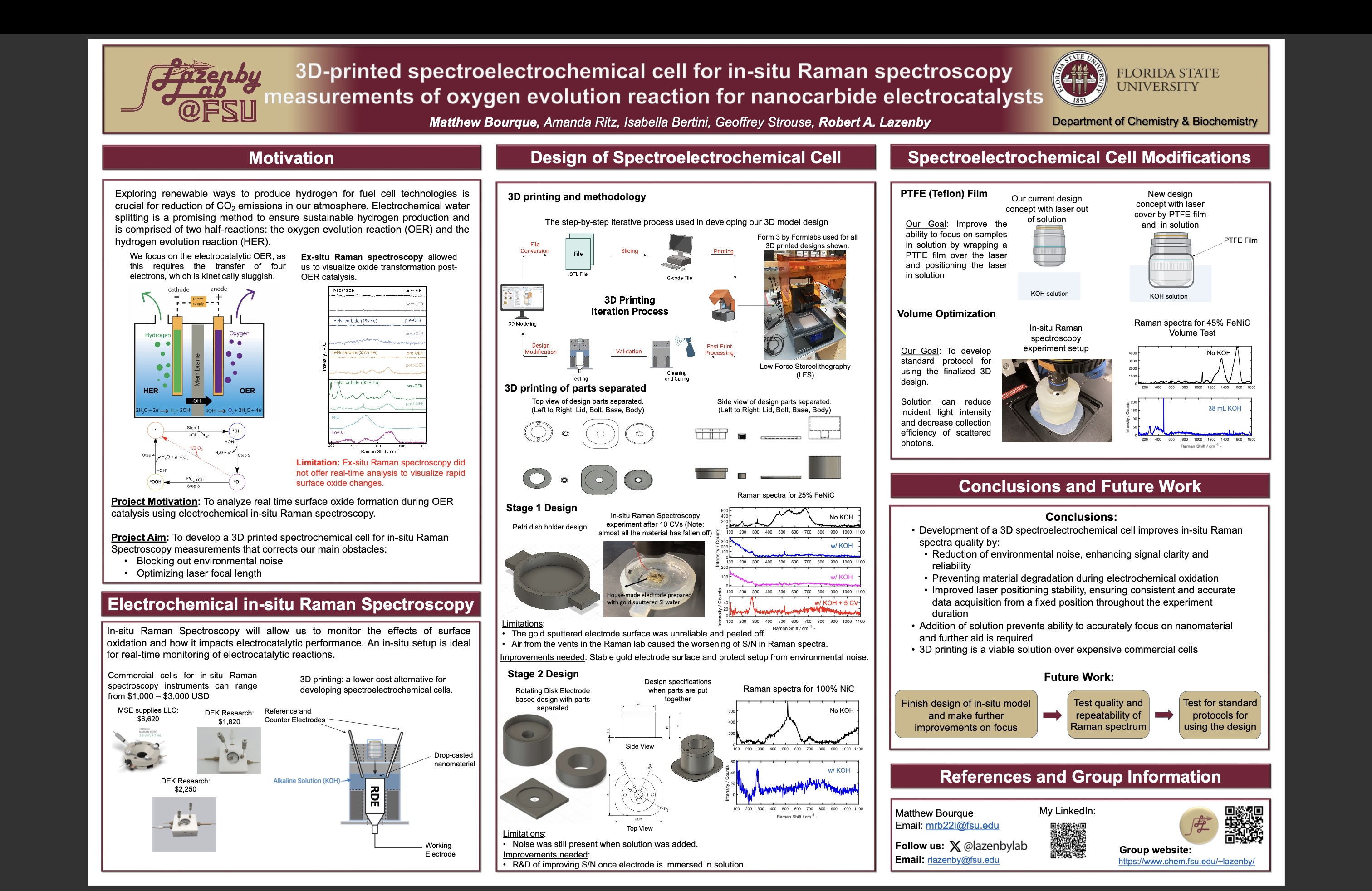Research Symposium
24th annual Undergraduate Research Symposium, April 3, 2024
Matthew Bourque Poster Session 1: 9:30 am - 10:30 am /61

BIO
My name is Matthew Bourque and I am a junior Chemical Engineering student at FSU, originally from Bradenton, Florida. My main interests in research revolve around renewable energy and sustainability, particularly in hydrogen production for fuel cell technology. I intend to further my education in graduate school, driven by a major interest in space exploration.
3D-printed spectroelectrochemical cell for in-situ Raman spectroscopy measurements of oxygen evolution reaction for nanocarbide electrocatalysts
Authors: Matthew Bourque, Robert LazenbyStudent Major: Chemical Engineering
Mentor: Robert Lazenby
Mentor's Department: Department of Chemistry and Biochemistry Mentor's College: University of Warwick Co-Presenters:
Abstract
Exploring renewable ways to produce hydrogen for fuel cell technologies is crucial for reduction of CO2 emissions in our atmosphere. Electrochemical water splitting is a promising method to ensure sustainable hydrogen production, and is comprised of two half-reactions: the oxygen evolution reaction (OER) and the hydrogen evolution reaction (HER). We focus on the electrocatalytic OER, as this requires the transfer of four electrons, which is kinetically sluggish. One of the limitations for implementing electrochemical water splitting at a large scale is the high cost of current state-of-the-art electrocatalysts such as RuO2 and IrO2. Transition metal carbides have emerged as a potential candidate for efficient OER electrocatalysts, however the impact of surface oxidation when exposed to harsh water-electrolyzer conditions requires further exploration. In-situ Raman Spectroscopy will allow us to monitor the effects of surface oxidation and how it impacts electrocatalytic performance. An in-situ setup is ideal for real-time monitoring of electrocatalytic reactions. However, the limitations of in-situ Raman spectroscopy include the high cost and complexity of experimental setup. 3D printing technology is a low-cost and versatile option for designing a spectroelectrochemical cell for monitoring these surface oxidation changes during electrocatalytic OER. The design of an in-situ Raman spectroelectrochemical cell requires optimization of the focal length, minimizing environmental noise, and ensuring device compatibility with the instrument. In this work, we outline the design elements of such a device using 3D printing, that will allow us to monitor real-time surface oxidation changes using in-situ Raman measurements of nanocarbide OER electrocatalysts.
Keywords: electrocatalysis Raman Spectroscopy 3D Printing


